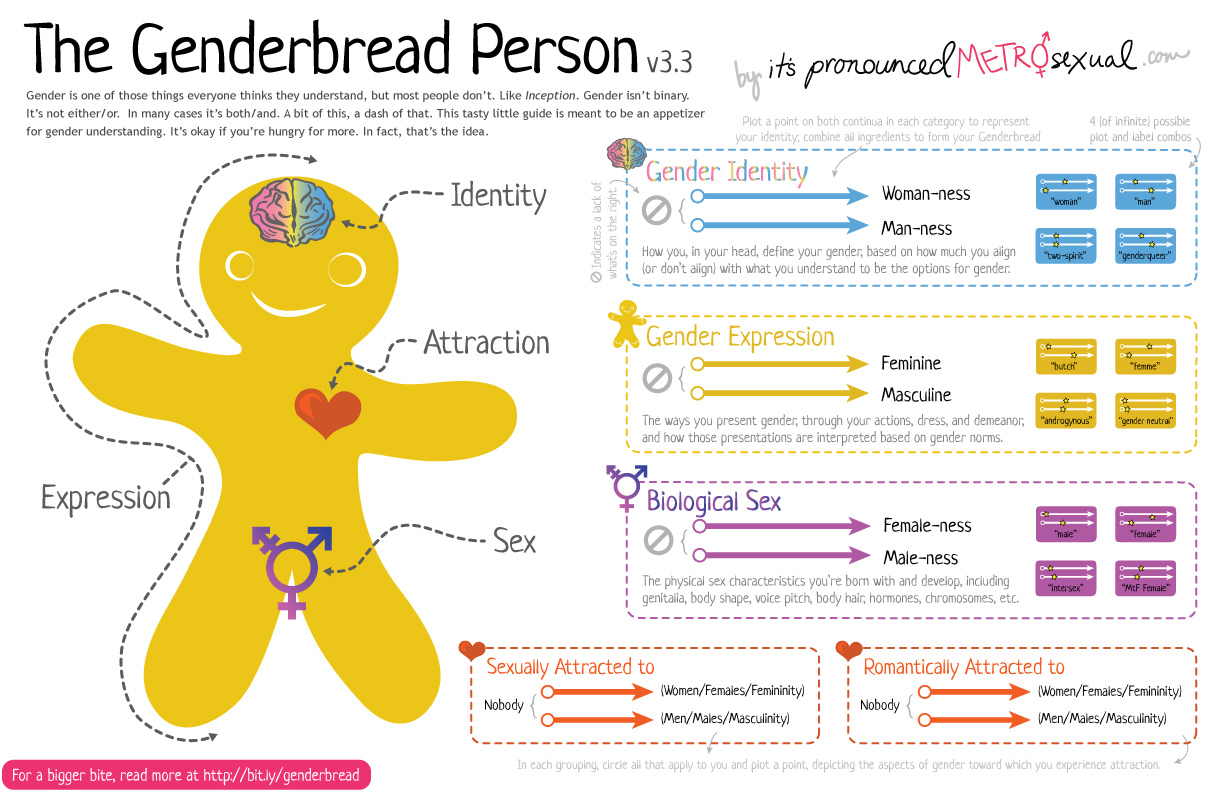After our discussion about complicated and complex, I would like to state that gender identity is COMPLEX. I choose to use the word complex because as we said in class complicated means that it has a solution, and I do not think of gender as something we have to solve. I looked at the publication date as I read chapter 6, Understanding Youth was copyrighted in 2006 and my version was printed in 2015. As I read I notice Nakkula & Toshalis broke chapter 6 into three main sections: a section on female gender, male gender and then a section titled “Coming out and up from Under” (pg 114). This section was added because of its (sexual orientation) “relationship to gender identity development” (pg. 114). At this point I was very disappointed but I read on.
I was disappointed because I was looking for the section about gender identity and how it differs from biological sex. There was no mention at all of the many different gender roles that are present in society, or the struggles of people from the transgender community. If you want to begin to understand the complexity of gender identity take a look IMPACT's Gender Identity Map. This is a great resource, and just the tip of the iceberg of understanding gender identity. Nakkula & Toshalis says that “optimal learning requires the presence of intact, fully present students. If parts of our students are closeted and hidden underground, we all lose out” (pg. 115). If we want our students to express themselves above ground then we need to make sure that our community/society is safe and supportive. We can’t control the whole world, but we can make sure our classrooms, our schools and our community are safe places for all students to be fully present and intact.
(Just a reminder from Fall 2014)